Building Hope, One Shoe at a Time
May 5, 2021
It’s important for many people affected by leprosy to wear special shoes that protect their nerve-damaged feet and toes. Feet with nerve damage from leprosy can become cut or ulcerated, and then infected. This can lead to deformity and even amputation.
Special footwear protects the feet and ensures that a person can still work, do chores, or attend school safely. Your generous support of American Leprosy Missions enables our partner hospitals to provide protective shoes and prosthetics to people affected by leprosy.
Take a tour with us of the prosthetics and orthotics department at the Schieffelin Institute of Health – Research and Leprosy Center, our Christian partner hospital in Karigiri, India. These workshops are your gifts in action: you are building hope!
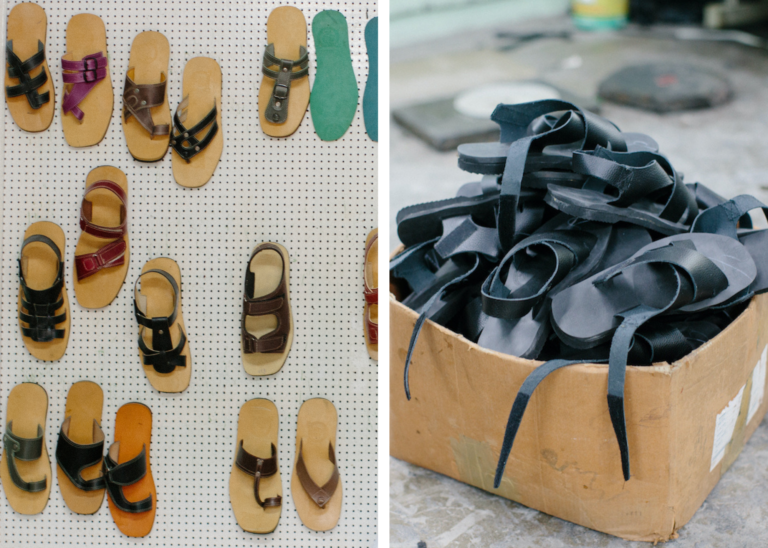
Building Hope for People Affected
The Schieffelin Institute, like several of our partners, has a prosthetics and orthotics team and several workshops to create shoes and prosthetic pieces for people affected by leprosy. As people visit the hospital for treatment, they also have easy access to these services. Once the team meets with a patient and assesses their needs, they can create either the prosthetic or the shoes that the patient needs. Mr. Thamareselvan is the senior orthopedic shoemaker at the Schieffelin Institute. He has worked there for more than 28 years. “Patients come here with pain and problems. But they leave here very happy with what they receive from us [Schieffelin]. If they feel unsatisfied, I’ll adjust the footwear four or five times to make sure they are satisfied! I want to do my very best for the patient.” Your generous gifts “keep giving” to people after they receive the cure for leprosy: a prosthetic leg or protective shoes enable them to live full and hopeful lives!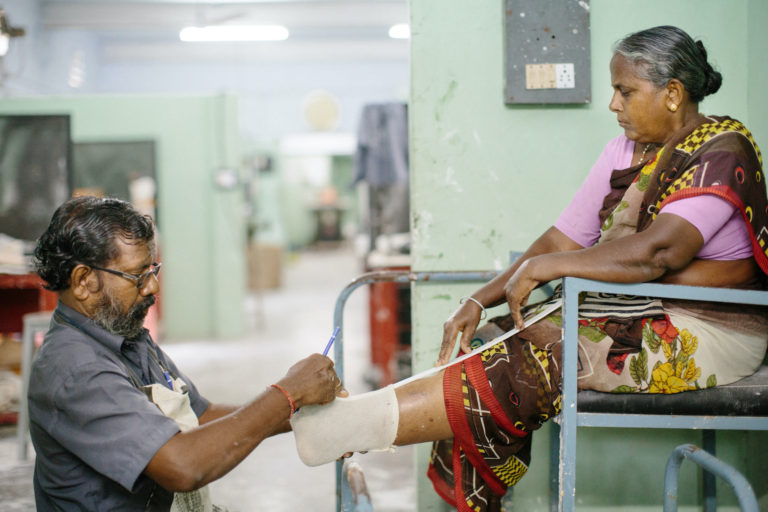
As senior orthopedic shoemaker, Mr. Thamareselvan manages the process to make special footwear for people affected by leprosy.
Building Hope with Jobs for the Future
Not only do these services greatly benefit people seeking treatment, but the workshops provide jobs and training opportunities for the community. The Schieffelin Institute trains students in prosthetics and orthotics so they can continue this important work. “The course started in 1996,” says Mr. Behura, head of the prosthetics and orthotics department. “I started off training the students with no faculty! The degree program started in 2013 and two batches have already graduated. When they graduate, within one month they will get employment, as there’s a high demand nationwide.”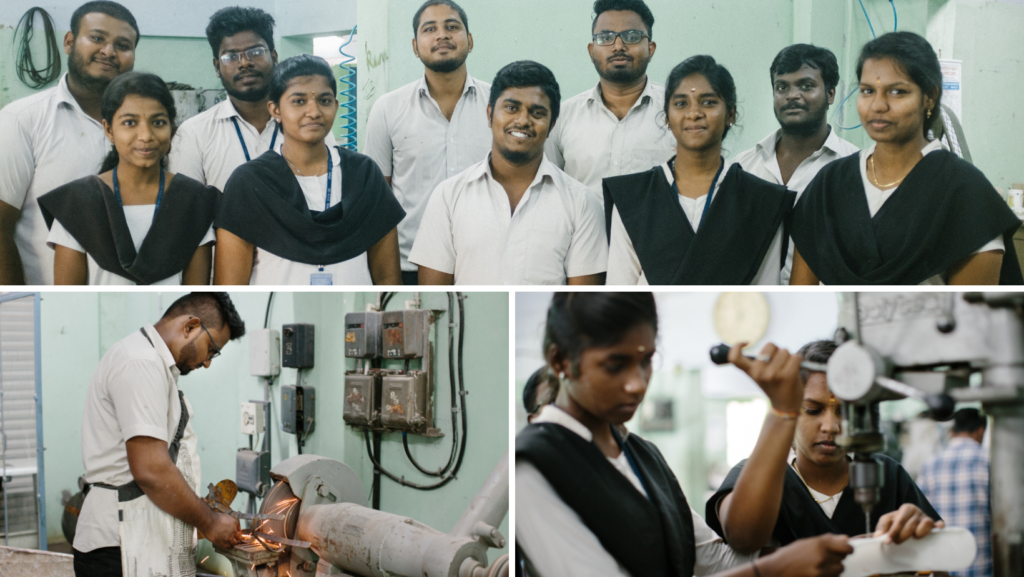
Students study at the Schieffelin Institute for full degrees and post-graduate training in prosthetics and orthotics. You support the next generation of specialists!
Building Hope through Expert Care
Protective shoes are made from high-quality rubber. The Schieffelin Institute has its own rubber workshop to create the best materials for these shoes; it’s the only place in the world that creates this type of rubber. Mr. Behura remembers how different it was to create shoes and prosthetics when he first arrived at Schieffelin. “I’ve been here for 21 years. Methods back then were very difficult: we used wood, metal, leather, old tires…Before, we could only do two pairs of orthotics per day, now we can do 20. This is possible in large part because of ALM’s partnership.” Thank you for your generous partnership which helps provide the very best care and expertise for people suffering from leprosy, providing the resources they need to live lives of dignity and hope!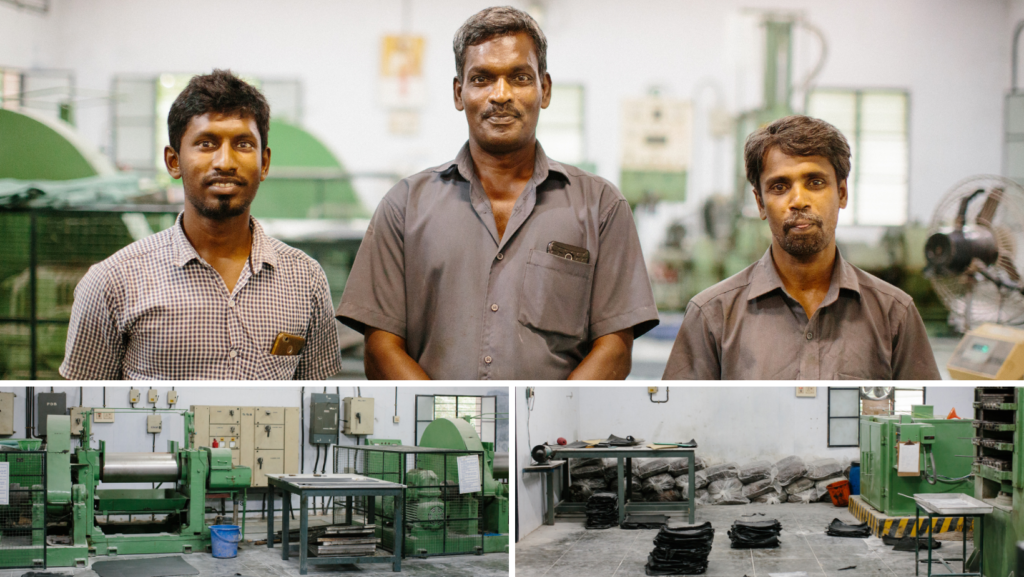
Left to right: Tamilvanan, three years at the Schieffelin Institute; Ravi, 23 years; Paulraj, 12 years. They all trained with the rubber board of India and now create high-grade rubber for Schieffelin.
Building Hope with New Tools to Protect People Affected
With your support, we’re excited to explore even more ways to improve footwear for people affected by leprosy! Nerve-damaged feet have lost sensation and the ability to feel pain when they’re bumped or under pressure; ulcers or infections are common at pressure points. With the Schieffelin Institute, we’re exploring brand new foot sensors that warn the wearer when they’re putting a dangerous amount of pressure on their feet. While our first model was large (see picture below), the models in production now are small enough to attach to a shoe! Pandiyan Devan was diagnosed with leprosy two years ago. His feet and hands both were damaged by the disease. “I came to Karigiri with an ulcer and footdrop on my left foot. They did a corrective surgery, now I’m walking well.” Now he’s part of the foot sensor study while he does physiotherapy at Schieffelin to prepare for another operation: this one will correct clawing in his right hand. Pandiyan says the staff and students here treat him not as a patient, but as a friend. Thank you for your commitment to spreading dignity and hope to those suffering from leprosy and related diseases around the world. Through the shoe department, training workshops and innovative technology at the Schieffelin Institute, you provide a well-equipped and compassionate environment for thousands of underserved people to receive the care and love of Christ.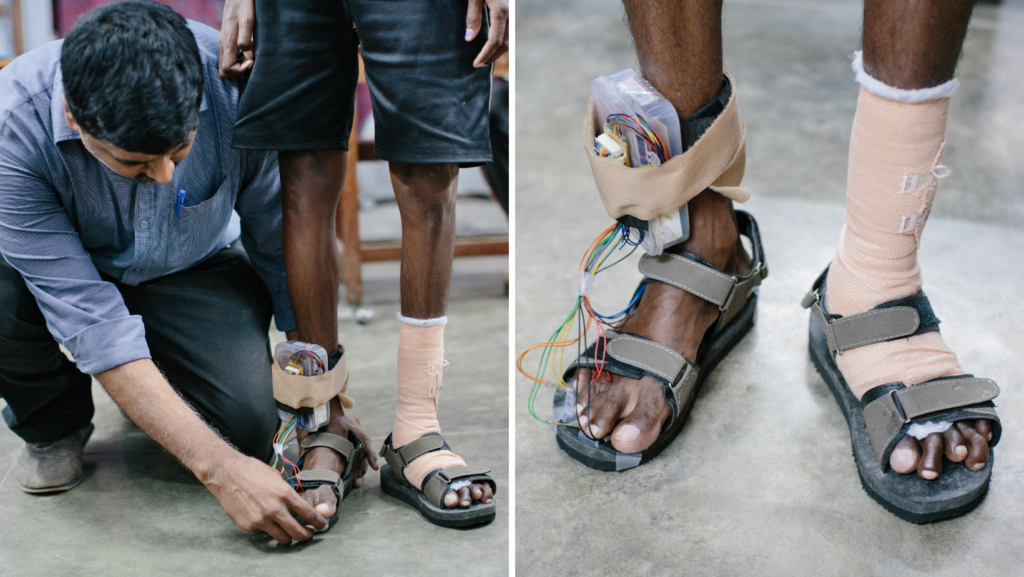
Dr. Satish Kumar Paul at the Schieffelin Institute adjusts the first model of the foot sensor—his original idea—on study participant, Pandiyan Devan.
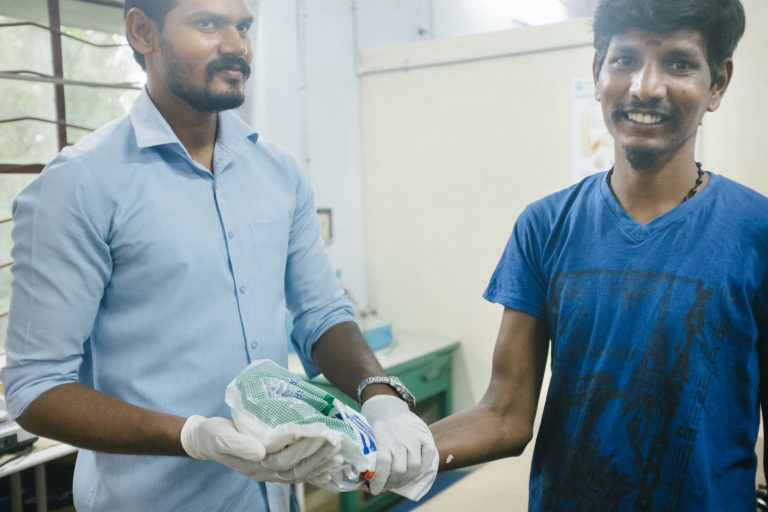
Pandiyan Devan (right) has received surgery at the Schieffelin Institute and is part of the foot sensor study.
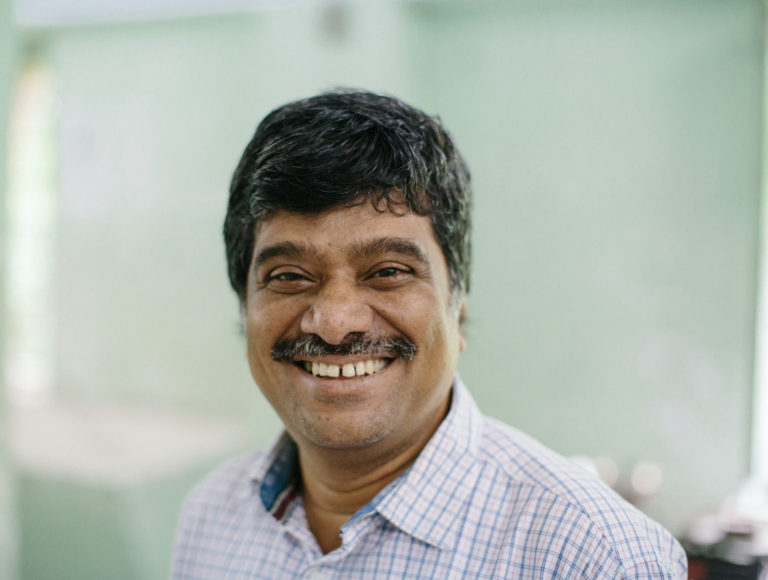
Mr. Behura is the head of the prosthetics and orthotics department. He’s been at the Schieffelin Institute for 21 years!
